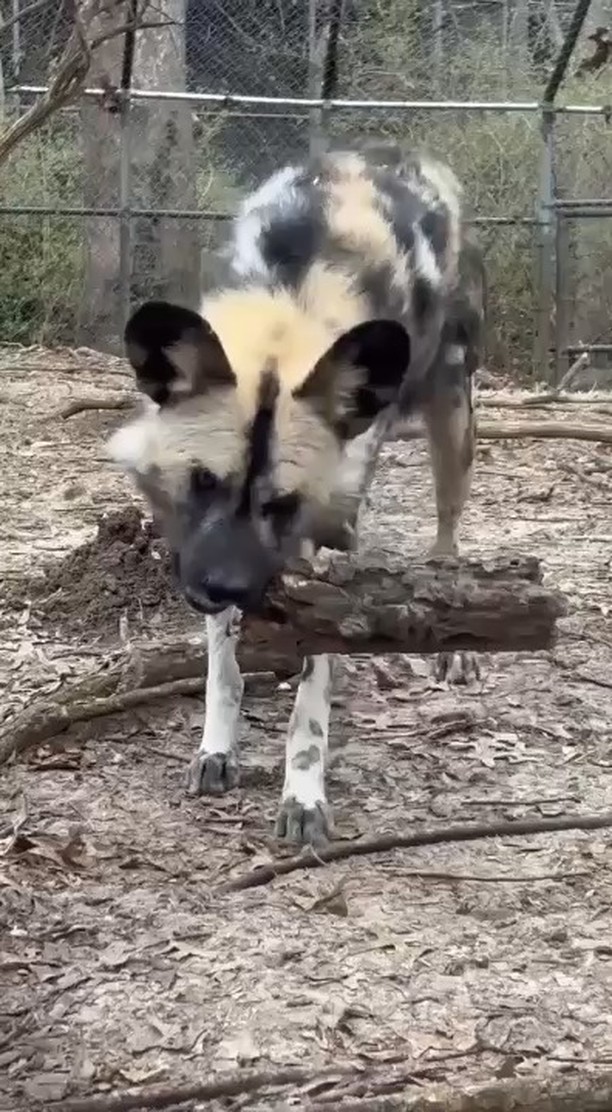- The fascinating biology and behavioral traits of the African painted dog.
- Current conservation status and challenges facing African painted dogs in the wild.
- The role of human-animal conflict, poaching, disease, and accidents in their declining population.
- Conservation strategies and programs helping to protect and preserve the species.
- The involvement of organizations like @zoos_aquariums and @apd_safe in safeguarding African painted dogs.
The African painted dog, an emblem of the wild spirit of east and southern African savannas, is among the most compelling species studied in zoology. With an exquisite coat of mottled black, yellow, and white patches, each dog boasts a pattern as distinct as a human fingerprint. African painted dogs—scientifically identified as Lycaon pictus—stand out not only for their appearance but also for their complex social structures and cooperative hunting strategies, which make them unique and endearing participants in the ecosystem.
Biologically, the African painted dog showcases adaptations that are perfect for its roaming lifestyle. Averaging 20 to 30 inches at the shoulder and weighing between 55 and 66 pounds, their slender but muscular frames allow them to endure long distances at steady speeds when hunting. These dogs are obligate social animals, living in packs that display an intricate hierarchy led typically by a dominant pair. The alpha male and female are the only breeders in the pack, a strategy that ensures genetic focus and strength. Pack members show remarkable care for one another, often seen sharing food and attending to injured or sick pack members.
Yet, despite their fascinating lives, painted dogs are facing daunting threats. Less than 7,000 individuals remain in the wild as of recent estimates, making them the most endangered large carnivore in their habitats. Their dwindling numbers are primarily a result of human-induced challenges. One major threat is human-animal conflict, often emerging from the encroachment of human settlements into wild habitats, leading to competition for space and resources. Farmers frequently see painted dogs as threats to livestock, which can result in retaliatory killings.
Poaching adds further peril, with snares intended for other animals often indiscriminately capturing these endangered dogs. Such traps cause severe injuries or death, decimating pack numbers and disrupting social structures crucial to their survival. Diseases like canine distemper and rabies, often transmitted from domestic dogs, pose additional risks, capable of wiping out entire populations swiftly. Moreover, traffic accidents on roads cutting through their territories add another layer of danger, highlighting the interactions between expanding human infrastructure and wildlife habitats.
Addressing these challenges demands a multifaceted approach. The creation of protected areas and wildlife corridors helps maintain natural habitats and reduces human-animal conflict. Conservation programs are crucial to these efforts, with initiatives focusing on both local and international strategies to curb population decline. Public awareness campaigns seek to educate communities about the ecological role of painted dogs and promote coexistence strategies, such as livestock management practices that deter wild dogs.
Prominent organizations like the Association of Zoos and Aquariums (AZA) and its African Painted Dog SAFE (Saving Animals From Extinction) program are actively involved in these conservation strategies. These entities are fostering collaborative efforts to bridge connections between AZA-accredited zoos and field partners, thereby maximizing conservation impact. By supporting field studies and habitat restoration projects, these collaborations aim to bolster protections for wild painted dog populations.
One distinguishing approach involves scientific research to monitor populations and health statuses. GPS collaring allows researchers to track movements and behaviors, providing invaluable data on pack dynamics and ecology. Additionally, community engagement programs situated near key habitats play a vital part in conservation success. These programs often include educational workshops, introducing sustainable agricultural techniques, and initiatives that compensate farmers for livestock lost to wild predators, thereby reducing animosity towards the dogs.
The clip featuring Arli, Digya, and Faro, filmed by animal care team leader Jenna, is a testament to efforts made in captive environments to mirror natural behaviors. Such footage not only captivates audiences but also serves educational purposes, highlighting the necessity of conservation endeavors. The playful exploration of these animals in controlled yet enriching environments reveals essential aspects of their lives and helps cultivate empathy and support for their wild counterparts.
The survival of the African painted dog hinges on coordinated conservation efforts and international cooperation. Each measure taken helps secure the future of this remarkable species, ensuring that these charismatic canines continue to roam the African savannas and captivate human hearts for generations to come. By understanding and integrating scientific, educational, and conservation practices, there remains hope for overcoming the challenges faced by one of nature’s most extraordinary yet vulnerable creatures.
*****
Source Description
Paws up if you love the African painted dogs! Check out this up-close look at Arli, Digya, and Faro that was filmed by animal care team lead Jenna. This clip shows them in full exploration mode, and you might just hear Faro chitchatting at the end!
With less than 7,000 individuals remaining in the wild, the African painted dog is the most endangered large carnivore in all of east and southern Africa due to such factors as human-animal conflict, snare traps set by illegal poachers, disease, and traffic accidents. The @zoos_aquariums @apd_safe program is at the forefront of protecting this species by increasing conservation support, raising public awareness, and building relationships between AZA institutions and painted dog field partners.


